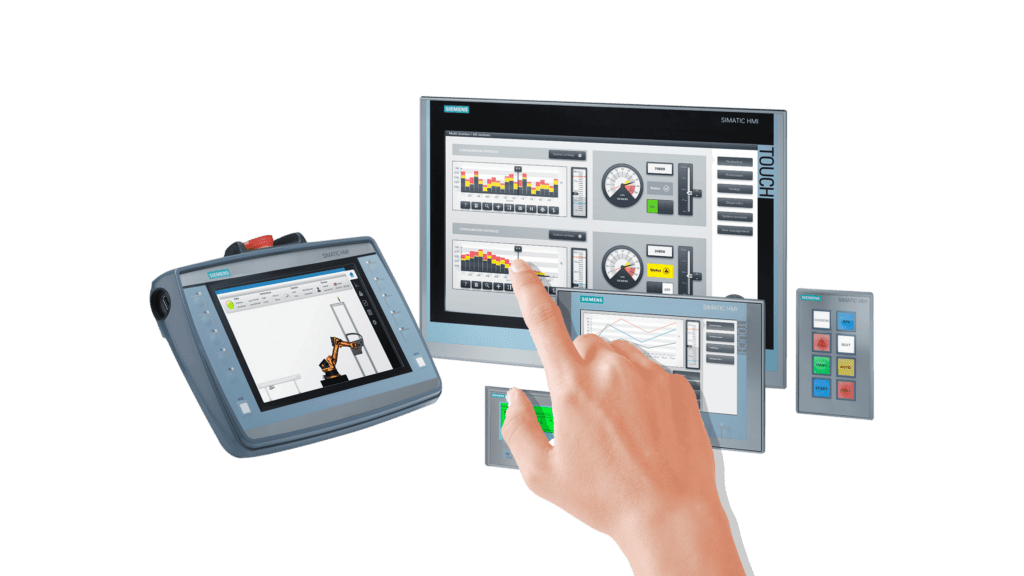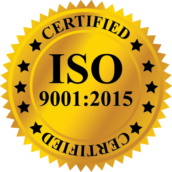Human Machine Interface (HMI)
HMI stands for human-machine interface and refers to the interface that allows the user to communicate with the machine, computer program, or system. Technically, you can use the term HMI for any display that someone uses to control a device, but the term is most often used to describe displays used in industrial applications. HMIs display real-time information and allow the user to control the machine through a graphical interface.
A human machine interface (HMI) is a user interface or panel that connects a person to a machine, system, or device. Although the term can technically be applied to any display that allows the user to interact with a device, HMI is most commonly used in the industrial sector. HMIs are similar but not the same as graphical user interfaces (GUIs); GUIs are often used for visual capabilities in HMIs.

working HMI
The HMI is often used in conjunction with a PLC (Programmable Logic Controller) to monitor and control processes in an automation system. Essentially, HMI allows the user to interact with the PLC through a graphical interface (usually touch). The interface allows executing commands, receiving and transforming data from the PLC; This data is then displayed on the screen in an easy-to-read format. This gives the user the flexibility to modify the and control a particular system.
Key components of hmi
1. Display: The display is the basic element of the HMI system and provides visual feedback to the user.
2. Input Device: An input device allows the user to communicate with the machine. Can touch the screen, keyboard or mouse.
3. Controller: The controller is the brain of the HMI system, it receives user input and sends instructions to the machine.
4. Software: It is the software that runs on the controller and manages the interaction between the user and the machine.
Use of Hmi In Industries
HMI finds its application in various industries. It is common in the manufacturing of a variety of products, from automobiles to food and beverages to pharmaceuticals. Industries such as energy, water, wastewater, construction and transportation can also use HMI. For functions such as system integration, operators and engineers, especially those responsible for process control systems, often use HMIs. These professionals can use HMI to control machines, vehicles, factories or buildings. HMI technology varies depending on the size of the machine or system used. It also depends on how you want to use the HMI. You can use an HMI for a single task, such as monitoring a piece of machinery, or for multiple purposes, including monitoring plant performance and controlling equipment. When a Supervisory Control and Data Acquisition (SCADA) system communicates with Programmable Logic Controllers (PLCs) and inputs/outputs to obtain information about equipment performance, this information is displayed on the HMI. The HMI can display this information in graphs, charts, or other visual formats that are easy to read and understand. HMI increases the efficiency of your operations by allowing you to view all performance information of plant equipment in one place. Users can also view and manage alarms using the HMI so they can resolve them quickly. Users can also use the HMI to control equipment to increase efficiency or adapt to changing conditions. They can make changes based on the information they see on the HMI. Being able to make adjustments to fit the screen makes this process quick and easy. As the Internet of Things (IoT) continues to play a significant role in industrial processes, HMIs are becoming increasingly important. You can use it to view information and control various devices connected to your device.
Difference between HMI and panel PC
Both HMIs and panel PCs are similar but have key differences in capabilities, functionality and flexibility. In industrial applications, it is common to use industrial PCs (panel PCs) and human-machine interfaces (HMIs) to acquire, process, store or display images.While theDesigns are indistinguishable in the industry, the techniques have a difference that goes beyond just their appearance. Differences include features, compatibility, degree of flexibility to change or increase the functionality of the system, and of course overall performance.
HMI
HMIs are hardware designed to communicate with a vendor-specific Programmable Logic Controller (PLC). These are private entities and their communication with third parties can be difficult due to the limitations of the communication controllers built into the software. Additionally, traditional HMIs usually only integrate with dedicated control software and do not allow users to provide one. Another limitation is that the various graphical HMI programs available on the market are often not compatible with each other. This prevents transparency projects from being transferred from one provider to another, which increases the cost and time of development and increases the difficulty of support after the implementation of the launch system. The Conventional HMI has a closed and limited operating system, which prevents other software from being loaded outside of the time specified by the manufacturer.
PANEL PC
It is possible to completely replace PLCs and HMIs with a panel PC because it functions as a logic controller, data center and interface display in a single unit. This reduces costs and increases performance and efficiency. Panel PC uses a powerful CPU, more RAM and a larger hard drive (SSD or HDD). Moreover, they have a large screen that allows information to be displayed simultaneously and makes the user’s work easier. The Ethernet port provides multiple interfaces, such as multiple USB and/or serial ports, enabling multiple connections and simplifying adaptation to future requirements.
Advantages of HMI
Improved data visualization: A powerful HMI always provides information about your activities. This allows you to see how your equipment or devices are working in one place. You can also view the target remotely. This feature helps you increase productivity over time and respond to notifications quickly.
Increase efficiency: Because the HMI provides constant access to real-time information, you can use it to monitor production and adjust at the right time according to demand. Data visualization can help you identify areas where you can improve your business’ performance, especially when combined with data analytics technology.
Low downtime: Centralized notifications save time by allowing you to respond to questions faster. Examining and analysing equipment performance data can also help you detect signs of mechanical problems and troubleshoot them before they become problems that can cause short-term problems.
Improved usability: HMIs make it easier for users to view and understand information and operate equipment. They present information using graphs, diagrams and other visual elements that users can interpret easily and quickly. Zenon also allows users to customize their panels according to their needs and preferences.
Unified system: Zenon allows you to control all equipment from a single platform, making it easier for operators to learn how to use the equipment. You can also get a holistic view of your entire business by viewing all your data in one place. Plus, all users get real-time updates so your team is always on the same page.
Remote monitoring
Another important feature of the Modern HMI is remote monitoring. users can access dashboards and reports from anywhere in the browser. This means you can check in and complete tasks from your office computer, your desk at home, or your phone on the go. Remote monitoring allows you to monitor outside of office hours without having to be at the workplace. You can also better monitor your processes and improve access to your information.
- Image
- SKU
- Rating
- Price
- Stock
- Availability
- Add to cart
- Description
- Content
- Weight
- Dimensions
- Additional information







